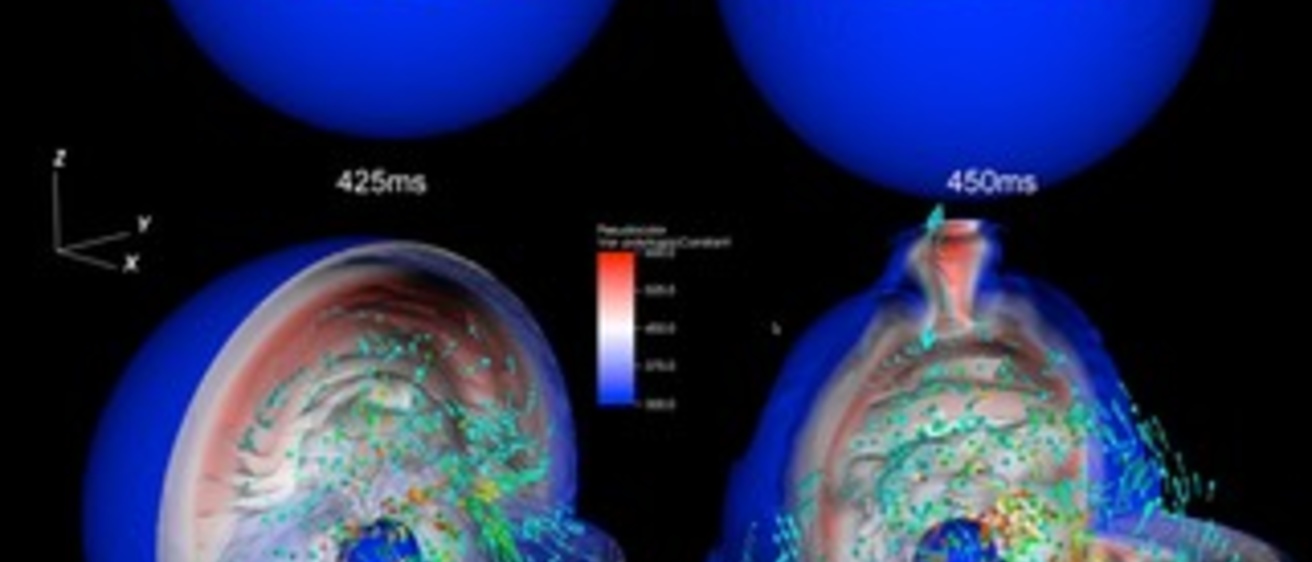
Breadcrumb
- Home
- Labs
- Advanced Labs
- Properties of Nebulae
- Part 1: Supernovae
Part 1: Supernovae
Exercise: The Crab
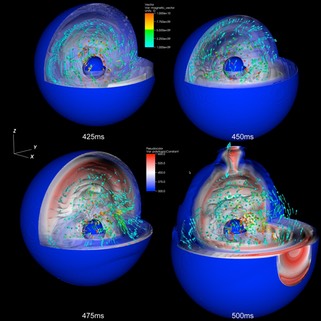
- A typical supernova releases 1044 Joules of energy within a few seconds. Compare this yield to how much energy the Sun will produce over its entire main sequence lifetime, assuming a constant solar luminosity of 3.8 x 1026 J/s and an age of 15 Gyr. Show your work. (Hint: keep track of your units.)
- Explain the differences between Type Ia and core-collapse supernovae. Be sure to include details about the progenitor stars as well as what is left after the supernova.
In MaxIm DL, open the R, B, and V images of the Crab nebula, located in the Labimage -> Nebula folder. Follow the guideposts below to create a tricolor image of the nebula to answer the questions below.
Using the small angle formula and the images, determine how large the Crab is if it is 6520 light years away. The image scale for Rigel, which is the telescope used to take the images of the Crab, is 0.73 arcseconds per pixel.
- What is the diameter of the Crab nebula along its longest axis? Give your answer in light years and km. Show your work.
- If the supernova that produced the Crab was observed in 1054 A.D., find the expansion rate in km/s. Show your work.
- If the Sun could supernova, how long would it take for the explosion to reach Earth’s orbit? Assume the expansion speed you found in question 4.
Guideposts:
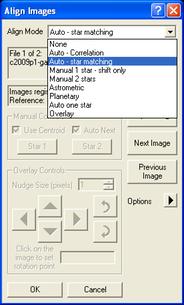
Aligning Images
Maxim has a tool that can align images that are slightly offset from one another. Select Process -> Align from the menu. Select the names of the images you want to align and click on the right arrow to add them to the list, then click OK. The Align Images window will appear. Here, you have several Alignment Modes from which you can choose. For these particular images, 'Auto-star matching' works well. You can preview how well your Alignment Mode is working by selecting 'Overlay All Images' before you proceed. Once you've selected your Alignment Mode, click OK. Notice the background stars of both images are now mapped to identical (x,y) pixel coordinates.
Adjusting the Image Contrast and Brightness
It is sometimes convenient to adjust the image display gray levels in order to enhance faint features in the image. This is known as adjusting the histogram. To do this, use the Screen Stretch window. If this window is not visible when Maxim starts, you can open it by selecting View -> Screen Stretch Tool (ctrl+H) from the menu.
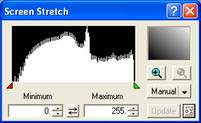
The Screen Stretch window shows a histogram of the intensity levels in the image. The height of the histogram shows the number of pixels with a given intensity. The Minimum and Maximum boxes control the range of brightnesses which are actually displayed - the levels in the image are scaled as you change the range. The range can also be set with the red and green arrows.
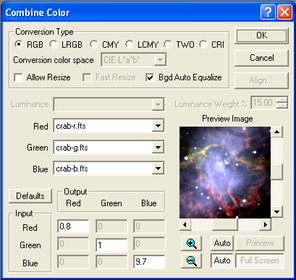
Making a Color Image
Color images can provide information that a grayscale image cannot convey. The sensor in a telescope does not take color pictures because this would sacrifice too much light sensitivity. However, color images can be constructed by taking images with different colored filters in front of the camera sensor. These images can then be combined to produce a color image.
To make an RGB color image from grayscale images in Maxim, you must first have at least three images of the same object taken with red, blue and green filters. Choose Color -> Combine Color from the menu. A dialog box appears which allows you to select the grayscale images to reproduce the red, green and blue colors in the final image, and how bright to make each color. You will have to adjust these numbers to get a good mix of colors in your final image.
To preview the image before you hit “Ok” to have a final version, click the “Auto” buttons on the lower right part of the Combine Color screen and a preview should pop up.
NOTE: Maxim attempts to adjust the brightness and contrast of your new color image for you, but it does not do a very good job with Earth-based images such as that of the chapel. Try manually setting the Minimum and Maximum intensity values in the Screen Stretch window to 0 and 255, respectively. This should produce a clearer color image which you can further adjust.
Background
The Crab nebula is a supernova remnant that was observed by Chinese and Japanese astronomers in 1054 A.D. It is the first recorded supernova in human history. It is roughly 6520 light years away from Earth. At the center of the nebula there is the Crab pulsar, which is a neutron star that is smaller than Iowa City, more massive than our Sun, and spins as fast a kitchen blender (33 ms). Neutron stars are formed by a supernova from a massive star.